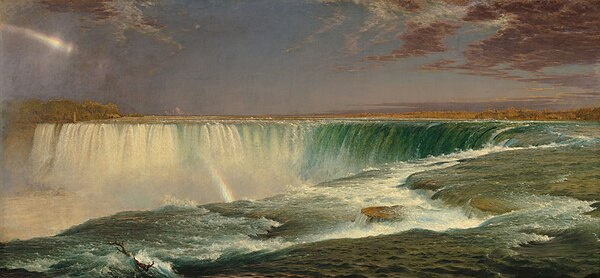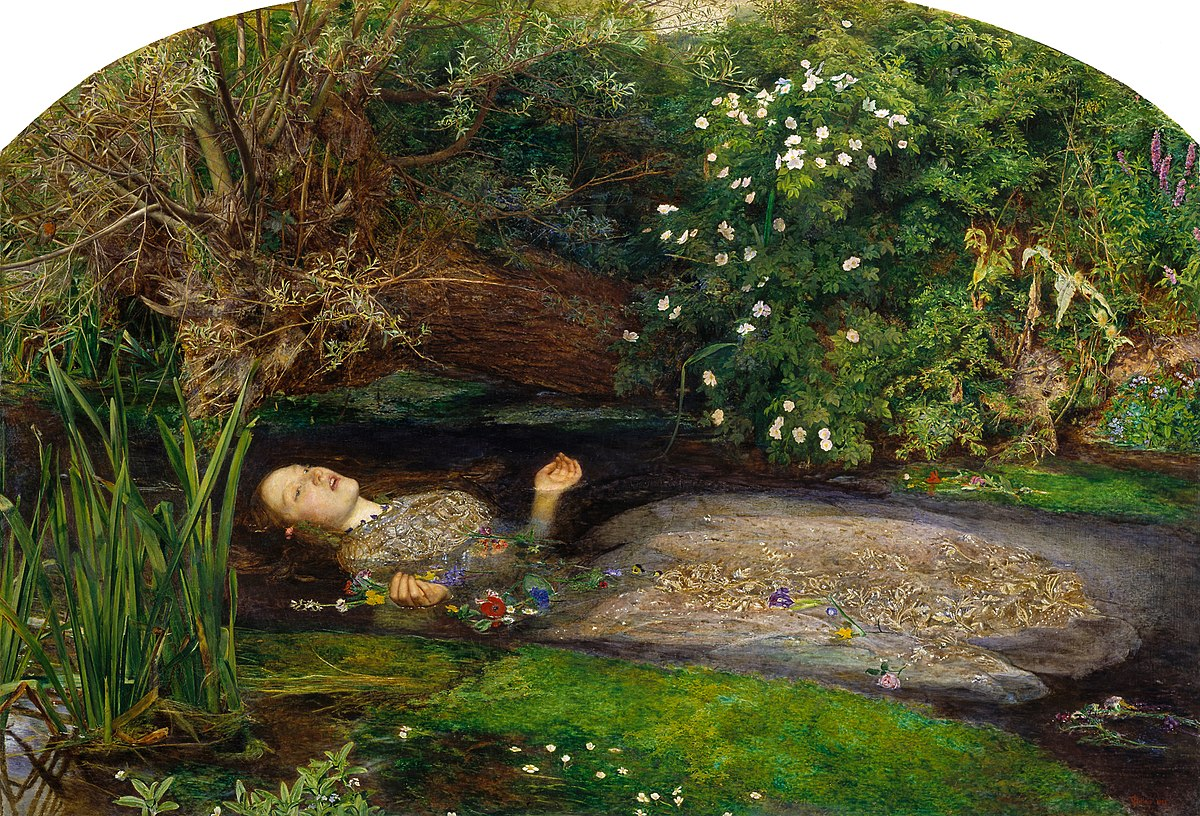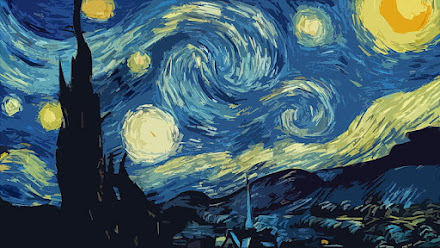Preferences and Perspectives in the Romantic Era
The Romantic Era, spanning from the late 18th to the mid-19th century, is known for its focus on emotion, nature, and individual expression. During this time, various artistic styles emerged, each with its own distinct characteristics. In this blog, I will examine two contrasting styles: the Hudson River School and the Pre-Raphaelites. I find the Hudson River School particularly appealing due to its stunning landscapes and emotional depth. In contrast, while the Pre-Raphaelite style is significant, it does not resonate with me in the same way. Let’s explore what makes each of these styles unique and why I prefer one over the other.
Hudson River School
Work 1: The Oxbow
- Artist: Thomas Cole
- Date: 1836
- Place Created: Massachusetts, USA
The Oxbow
Aesthetic Analysis:
Color: Cole employs a rich palette filled with vibrant greens and blues, creating a sense of life and energy in the landscape. The contrast between the wild, untamed left side and the orderly, cultivated right side suggests a balance between nature and human civilization.
Light: The dramatic use of light draws attention to the Oxbow, creating a focal point that emphasizes the beauty and power of the natural world.
Composition: The sweeping curves of the river guide the viewer's eye through the painting, inviting exploration and reflecting the Romantic era’s fascination with nature.
My thoughts: This painting inspires feelings of awe and reflection. It captures the tension between nature and civilization, encouraging viewers to think about their relationship with the environment.
Work 2: Niagara Falls
- Artist: Frederic Edwin Church
- Date: 1857
- Place Created: New York, USA
Niagara Falls
Aesthetic Analysis:
Texture: The painting’s texture clearly shows the rushing water and mist of the falls, pulling viewers into the scene.
Perspective: Church uses a striking viewpoint that highlights the size and beauty of the falls, showcasing the Romantic idea of nature’s greatness.
Emotion: The artwork expresses both the power and beauty of nature, creating feelings of awe.
My thoughts: This piece inspires a deep sense of wonder and respect for the natural world. Church’s skill in capturing the intensity of Niagara Falls encourages reflection on the power of nature.
Pre-Raphaelite Brotherhood
Work 1: Ophelia
- Artist: John Everett Millais
- Date: 1851-1852
- Place Created: England
Ophelia
Aesthetic Analysis:
Detail: Millais’s careful attention to the flowers shows the Pre-Raphaelite focus on realism and nature. Each flower has meaning and is painted with precision.
Color: The bright, jewel-like colors create a strong contrast between Ophelia’s pale figure and the rich, surrounding plants.
Emotion: Ophelia’s expression, along with the calm yet sorrowful setting, brings about a feeling of sadness.
My thoughts: While I recognize the skill involved in this piece, it doesn’t connect with me as much. The theme of tragic beauty feels heavy and less uplifting.
Work 2: The Awakening Conscience
- Artist: William Holman Hunt
- Date: 1853
- Place Created: England
The Awakening Conscience
Aesthetic Analysis
Symbolism: The painting is filled with symbols, like the cat and the clock, representing lost time and the woman’s awakening awareness.
Composition: The way the figures and objects are arranged guides the viewer’s eye to the woman’s expression, highlighting her emotional struggle.
Color: The bright, contrasting colors enhance the emotional impact of the scene.
Emotional Reaction: While the painting is powerful, its serious subject matter doesn’t inspire me as much. The moral themes and social messages feel heavy and don’t engage my imagination.
Comparative Analysis
Intentions of Each Style
The Hudson River School artists aimed to celebrate nature, highlighting its beauty and greatness while exploring humanity's connection to the natural world. Their paintings evoke feelings of awe and respect, encouraging viewers to appreciate the landscape and understand their role within it.
In contrast, the Pre-Raphaelites wanted to challenge the norms of their time, focusing on detailed realism and moral storytelling. Their works often address themes of love, death, and redemption, seeking to inspire thought and reflection on social issues.
Personal Connection
I feel a stronger connection to the Hudson River School's emphasis on the beauty of nature. Their works bring a sense of calm and a connection to the earth, which contrasts with the more somber themes of the Pre-Raphaelites. While I admire their technical skill and depth, I’m more drawn to the uplifting spirit found in the landscapes of the Hudson River School.
Conclusion
In conclusion, the Hudson River School provides a lively exploration of nature that captivates my aesthetic tastes, while the Pre-Raphaelites offer a more compelling but heavier narrative that doesn’t resonate as much with me. Both styles reflect the Romantic Era’s interest in emotion, nature, and the human experience, but they evoke different reactions and reflections.References
- "Niagara (Frederic Edwin Church)." Wikipedia, The Free Encyclopedia, 28 Oct. 2023, https://en.wikipedia.org/wiki/Niagara_%28Frederic_Edwin_Church%29. Accessed 29 Oct. 2024.
"Niagara Falls." The Metropolitan Museum of Art, https://www.metmuseum.org/art/collection/search/437292.
"Ophelia." Tate, https://www.tate.org.uk/art/artworks/millais-ophelia-n01434.
"Ophelia (painting)." Wikipedia, The Free Encyclopedia, 28 Oct. 2023, https://en.wikipedia.org/wiki/Ophelia_%28painting%29. Accessed 29 Oct. 2024.
"The Awakening Conscience." Pre-Raphaelite Society, https://www.preraphaelitesociety.org/paintings/the-awakening-conscience/.
"The Awakening Conscience." Wikipedia, The Free Encyclopedia, 28 Oct. 2023, https://en.wikipedia.org/wiki/The_Awakening_Conscience. Accessed 29 Oct. 2024.
"The Oxbow." Wikipedia, The Free Encyclopedia, https://en.wikipedia.org/wiki/The_Oxbow. Accessed 29 Oct. 2024.
"Thomas Cole’s The Oxbow." Smarthistory, https://smarthistory.org/thomas-coles-the-oxbow/.






Hi Lily, You did a great job on this blog! Of the styles, the Pre-Raphaelite is my favorite, and my favorite piece is Ophelia. I appreciate how the perspectives in your blog vary from piece to piece, offering more insight. Overall, you made a very good blog post, and I believe the artists' intentions were well conveyed through your work. Great job!
ReplyDeleteI like the organization and formatting of the blog makes it much easier to follow and read compared to what I have been doing myself. I seem to like the Hudson River school more than the other one, much preferring the landscapes of the 'new world' compared to the other paintings. They seem to use more of the one point of light and other natural things with color to make the paintings look appealing. This seemed to be a new perspective for the artists to straight be focusing on landscape and not having any specific subject matter or religion background they were putting in for focus points in the paintings.
ReplyDeleteHi, Lily. I really enjoyed the structure of your blog post and how organized your thoughts were on each piece of work. Like you, I do prefer the Hudson River School style as I also prefer landscapes or paintings of people or objects. The texture of the Niagara Falls painting is captivating. I have been to Niagara Falls, and it seems nearly impossible to take a photograph to accurately capture the beauty of it, and I think what is often missing in our photos is the texture like what we see in this painting. You can almost feel the mist coming from the water. As you mentioned with regard to emotion, I think the artist's intention was probably to evoke feelings from the viewer. It does make you consider the power of nature. With this one and the Oxbow, I think we walk away with a feeling of calmness and relaxation. These are perfect pieces for a doctor's office to help with soothing nervous patients.
ReplyDelete